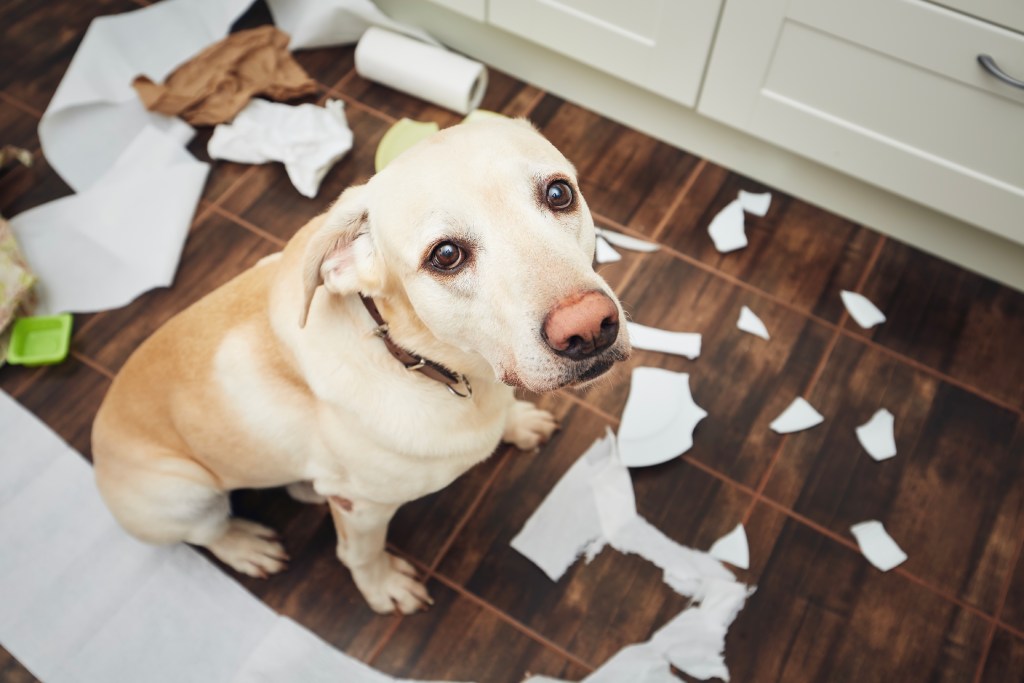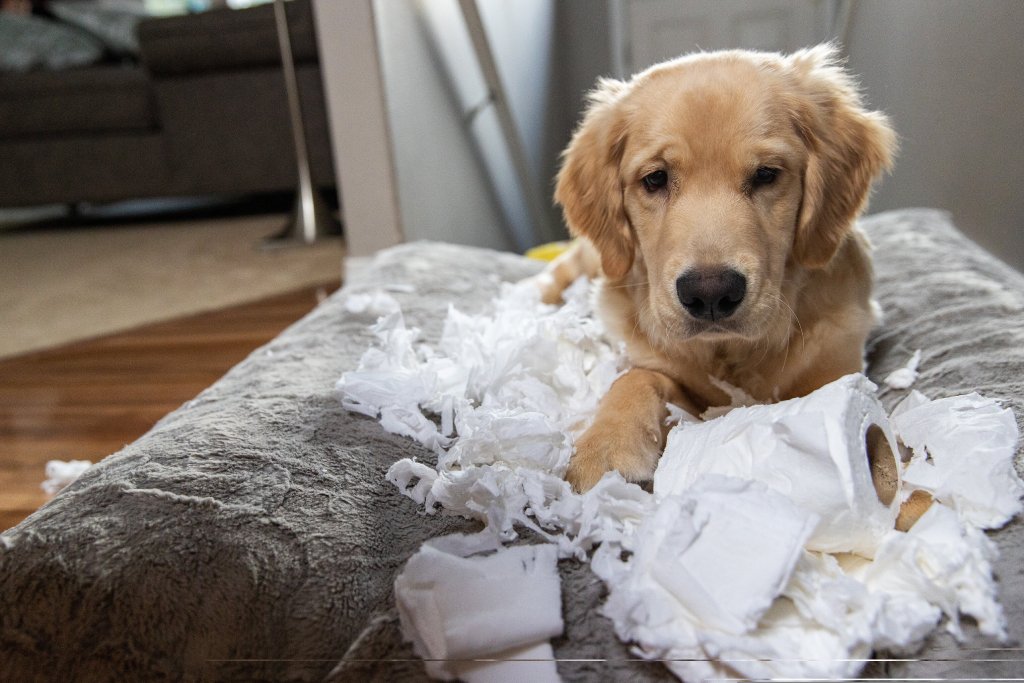
Dogs are highly social creatures. Sometimes they become overly attached or dependent on their owners, leading to anxiety when owners leave them alone. However, studies have shown that not all dogs with “hyper attachment” develop separation anxiety. Instead, separation anxiety is related to the general anxiety level of the animal, which is usually under control when the owner is present.
The behaviour changes associated with separation anxiety can include excessive vocalization, pacing, house soiling, and destructive behaviours directed at the home.
Any dog at any age can develop separation anxiety. However, some contributing factors put certain dogs at higher risk. Here are some of the more notable ones:
Absolutely! There are things that you can do to reduce the risk of your dog developing separation anxiety (or other anxieties, for that matter). Evidence shows that dogs that had never attended an obedience class were at higher risk of developing separation anxiety. There are likely two reasons for this statistic. First, obedience classes provide the necessary socialization dogs need; being with other people and pets. Socialization helps improve confidence and reduces anxiety. Second, regular training provides structure that can help your dog be more relaxed and confident.
If you happen to have a “velcro” dog, try to ignore them when they are anxious and clinging to you and reward them when they are calm and exhibiting explorative behaviour away from you. The most crucial times to ignore your pet are when you are just about to leave (so that you don’t get them excited before departing) and for about 5-10 minutes after you get home (when they will likely cling to you with excitement).

Treating separation anxiety can be difficult because the problem occurs when the owner is away and not there to help the dog. Plus, every dog has different levels of stress and different triggers for anxiety. First and foremost, alert your veterinarian that you suspect your pet has separation anxiety. They can be invaluable sources of information and guidance. They will also help you rule out any medical conditions that may present with similar signs to separation anxiety.
Treatment involves both medication and behavioural therapy:
1) Medications help treat the dog’s abnormal emotional state. Many natural anti-anxiety products, including pheromones, dispensed simultaneously with the prescribed drugs can help boost the effectiveness of the treatment. However, drugs may take 4-8 weeks to work, so other short-term drugs may need to be concurrently prescribed.
2) Create a predictable routine that involves time for play, training, and social interactions. Make sure you include periods when your dog plays or rests on its own, and you give them no attention. Try to coincide departures during that part of the schedule.
3) Create independence by ignoring attention-seeking behaviours and rewarding calm and relaxed behaviours. Then increase the length of time the dog must stay calm to get a reward (a treat or attention).
4) Establish a specific spot or area where the dog can settle and relax during non-attention times. A crate or a special mat will work just fine. Provide enrichment, including toys, pheromones, and even music to help reduce your dog’s overall stress level.
5) Make sure you fulfil your dog’s basic needs for adequate physical and mental exercise. That includes the structure of training and the fun of playtime. Choose games and activities that mentally stimulate your dog to reduce tension and stress naturally.
6) When you get home, ignore your dog until it settles, or you will encourage excited and anxious behaviour. Once your dog calms down, then provide attention. Timing is key here.
7) Never punish destructive behaviour or house soiling, as it will only increase your pet’s anxious state.
Time and patience are paramount when dealing with separation anxiety. By following the plan and being deliberate and consistent with rewards, you should begin to see significant improvement. Remember, anxiety is contagious and can spread from owner to pet and from pet to owner. Being a calming influence can help you both!
